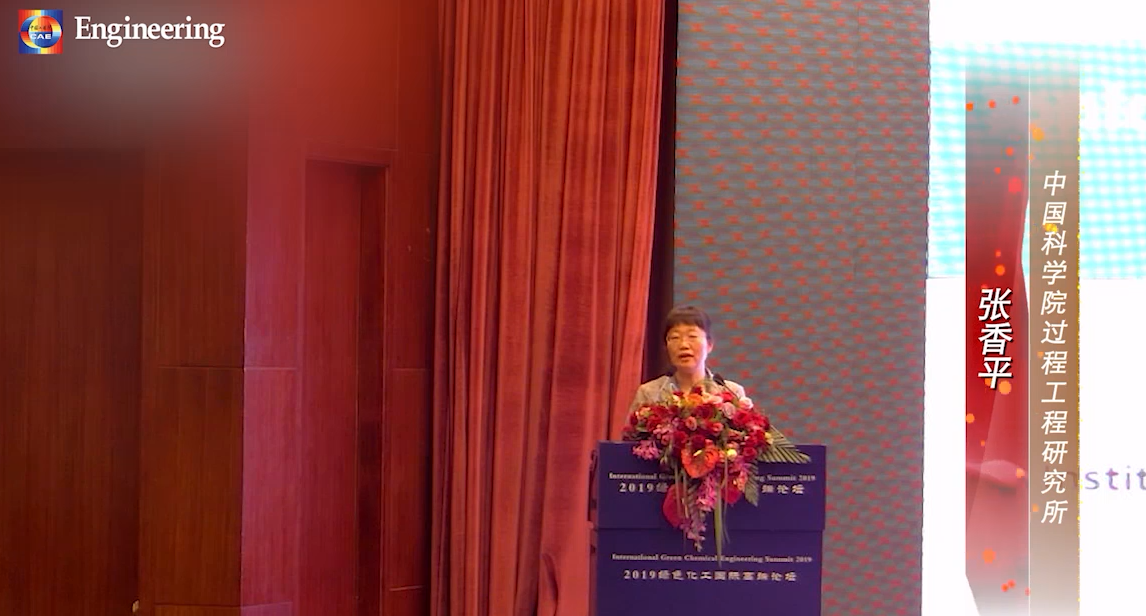检索范围:
排序: 展示方式:
Liquid-based high-temperature receiver technologies for next-generation concentrating solar power: A
《能源前沿(英文)》 2023年 第17卷 第1期 页码 16-42 doi: 10.1007/s11708-023-0866-8
关键词: next-generation concentrating solar power liquid-based solar receiver molten salt liquid metals
Systematic screening procedure and innovative energy-saving design for ionic liquid-based extractive
《化学科学与工程前沿(英文)》 2023年 第17卷 第1期 页码 34-45 doi: 10.1007/s11705-022-2234-3
关键词: ionic liquid entrainer screening feasibility analysis extractive distillation
Chongzhe ZOU, Huayi FENG, Yanping ZHANG, Quentin FALCOZ, Cheng ZHANG, Wei GAO
《能源前沿(英文)》 2019年 第13卷 第2期 页码 284-295 doi: 10.1007/s11708-019-0613-3
关键词: cylindrical cavity receiver 3-D numerical simulation geometric optimization direct normal irradiation
M Helal Uddin, Nesrin Ozalp, Jens Heylen, Cedric Ophoff
《化学科学与工程前沿(英文)》 2018年 第12卷 第4期 页码 683-696 doi: 10.1007/s11705-018-1782-z
An innovative and efficient design of solar receivers/reactors can enhance the production of clean fuels via concentrated solar energy. This study presents a new jet-type burner nozzle for gaseous feedstock injection into a cavity solar receiver inspired from the combustion technology. The nozzle design was adapted from a combustion burner and successfully implemented into a solar receiver and studied the influence of the nozzle design on the fluid mixing and temperature distribution inside the solar receiver using a 7 kW solar simulator and nitrogen as working fluid. Finally, a thorough computational fluid dynamics (CFD) analysis was performed and validated against the experimental results. The CFD results showed a variation of the gas flow pattern and gas mixing after the burner nozzle adaptation, which resulted an intense effect on the heat transfer inside the solar receiver.
关键词: solar reactor nozzle CFD heat transfer mixing and recirculation
Honglun YANG, Qiliang WANG, Jingyu CAO, Gang PEI, Jing LI
《能源前沿(英文)》 2020年 第14卷 第4期 页码 867-881 doi: 10.1007/s11708-020-0707-y
关键词: concentrated solar power parabolic trough receiver heat loss solar energy annual performance
Yong SHUAI, Xinlin XIA, Heping TAN
《能源前沿(英文)》 2010年 第4卷 第4期 页码 488-495 doi: 10.1007/s11708-010-0007-z
关键词: Monte Carlo method solar energy radiation performance cavity receiver
Numerical simulation of the heat flux distribution in a solar cavity receiver
Yueshe WANG, Xunwei DONG, Jinjia WEI, Hui JIN
《能源前沿(英文)》 2011年 第5卷 第1期 页码 98-103 doi: 10.1007/s11708-010-0019-8
关键词: solar cavity receiver Monte Carlo method heat flux distribution
SiO2 passivation layer grown by liquid phase deposition for silicon solar cell application
Yanlin CHEN,Sihua ZHONG,Miao TAN,Wenzhong SHEN
《能源前沿(英文)》 2017年 第11卷 第1期 页码 52-59 doi: 10.1007/s11708-016-0429-3
关键词: Si solar cell passivation SiO2 liquid phase deposition carrier lifetime
Experiment study of a quartz tube falling particle receiver
Tianjian WANG, Fengwu BAI, Shunzhou CHU, Xiliang ZHANG, Zhifeng WANG
《能源前沿(英文)》 2017年 第11卷 第4期 页码 472-479 doi: 10.1007/s11708-017-0502-6
关键词: solar thermal electricity central receiver particle receiver experimental research
Xueqing LIU, Xiaodong ZHAO, Luyi LU, Jianlan LI
《能源前沿(英文)》 2021年 第15卷 第2期 页码 499-512 doi: 10.1007/s11708-021-0742-3
关键词: dust deposition discrete element method (DEM) photovoltaic mirrors solar energy

SHI Mingheng, DU Bin, ZHAO Yun
《能源前沿(英文)》 2007年 第1卷 第1期 页码 85-90 doi: 10.1007/s11708-007-0008-8
关键词: desiccant air-conditioning regeneration process air-conditioning system energy regeneration
Perspective on gallium-based room temperature liquid metal batteries
《能源前沿(英文)》 2022年 第16卷 第1期 页码 23-48 doi: 10.1007/s11708-022-0815-y
关键词: liquid metals soft electrodes flexible batteries deformable energy supply devices epidermal electronics
Harvesting biomechanical energy in the walking by shoe based on liquid metal magnetohydrodynamics
Dan DAI, Jing LIU, Yixin ZHOU
《能源前沿(英文)》 2012年 第6卷 第2期 页码 112-121 doi: 10.1007/s11708-012-0186-x
关键词: human energy harvesting liquid metal wearable magnetohydrodynamics generator parasitic power in shoe
Hydrogen production from water splitting on CdS-based photocatalysts using solar light
Xiaoping CHEN, Wenfeng SHANGGUAN
《能源前沿(英文)》 2013年 第7卷 第1期 页码 111-118 doi: 10.1007/s11708-012-0228-4
关键词: hydrogen photocatalysis solar conversion cadmium sulfide (CdS) complex
标题 作者 时间 类型 操作
Liquid-based high-temperature receiver technologies for next-generation concentrating solar power: A
期刊论文
Systematic screening procedure and innovative energy-saving design for ionic liquid-based extractive
期刊论文
Geometric optimization model for the solar cavity receiver with helical pipe at different solar radiation
Chongzhe ZOU, Huayi FENG, Yanping ZHANG, Quentin FALCOZ, Cheng ZHANG, Wei GAO
期刊论文
A new approach for fuel injection into a solar receiver/reactor: Numerical and experimental investigation
M Helal Uddin, Nesrin Ozalp, Jens Heylen, Cedric Ophoff
期刊论文
Potential of performance improvement of concentrated solar power plants by optimizing the parabolic troughreceiver
Honglun YANG, Qiliang WANG, Jingyu CAO, Gang PEI, Jing LI
期刊论文
Numerical simulation and experiment research of radiation performance in a dish solar collector system
Yong SHUAI, Xinlin XIA, Heping TAN
期刊论文
Numerical simulation of the heat flux distribution in a solar cavity receiver
Yueshe WANG, Xunwei DONG, Jinjia WEI, Hui JIN
期刊论文
SiO2 passivation layer grown by liquid phase deposition for silicon solar cell application
Yanlin CHEN,Sihua ZHONG,Miao TAN,Wenzhong SHEN
期刊论文
Experiment study of a quartz tube falling particle receiver
Tianjian WANG, Fengwu BAI, Shunzhou CHU, Xiliang ZHANG, Zhifeng WANG
期刊论文
Influence mechanism of dynamic and static liquid bridge forces on particle deposition behaviors in solar
Xueqing LIU, Xiaodong ZHAO, Luyi LU, Jianlan LI
期刊论文
张香平:基于离子液体的汽化离和转化过程(2019年5月25日)
2021年04月22日
会议视频
Investigation on regeneration and energy storage characteristics of a solar liquid desiccant air-conditioning
SHI Mingheng, DU Bin, ZHAO Yun
期刊论文
Harvesting biomechanical energy in the walking by shoe based on liquid metal magnetohydrodynamics
Dan DAI, Jing LIU, Yixin ZHOU
期刊论文








